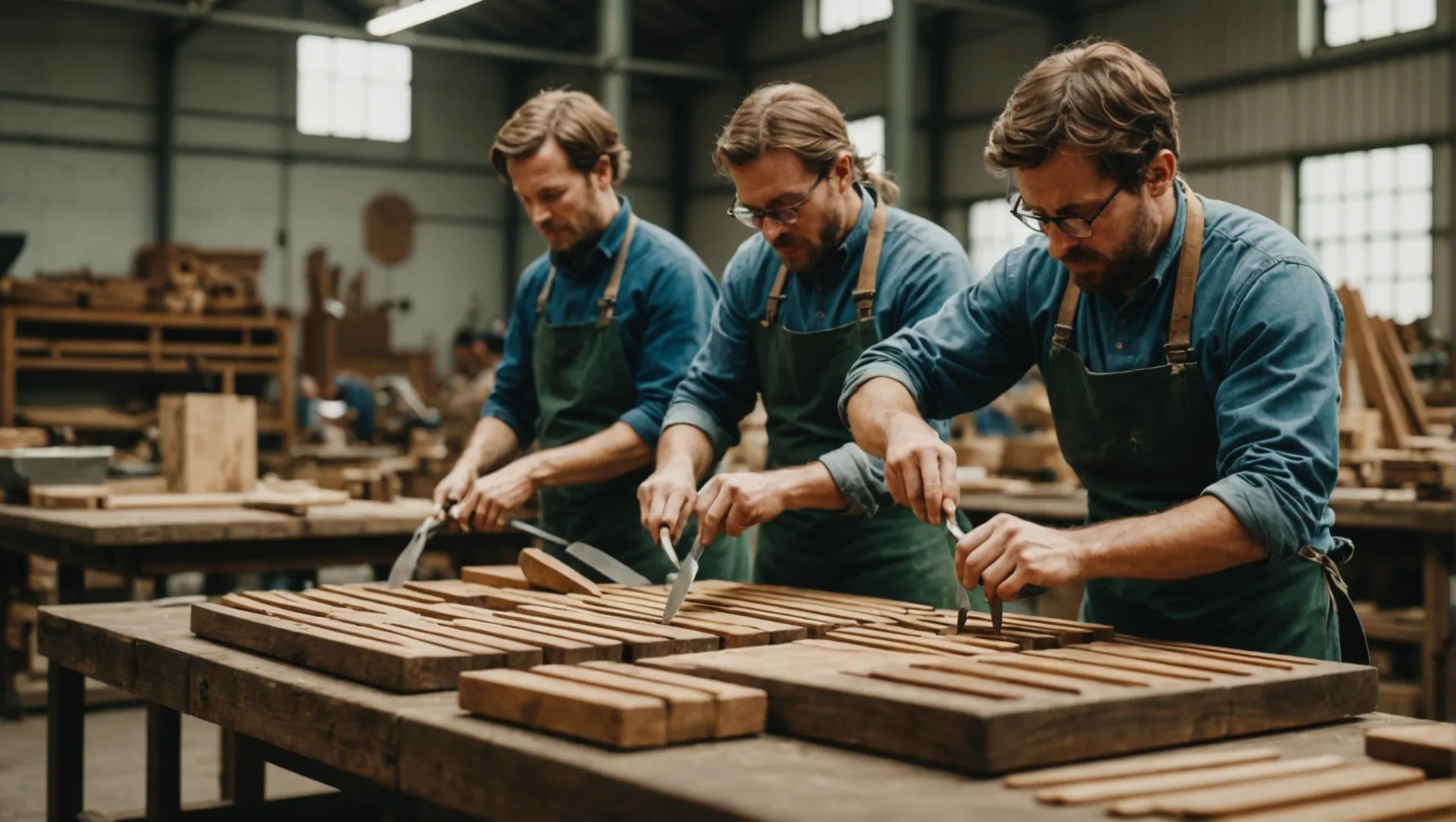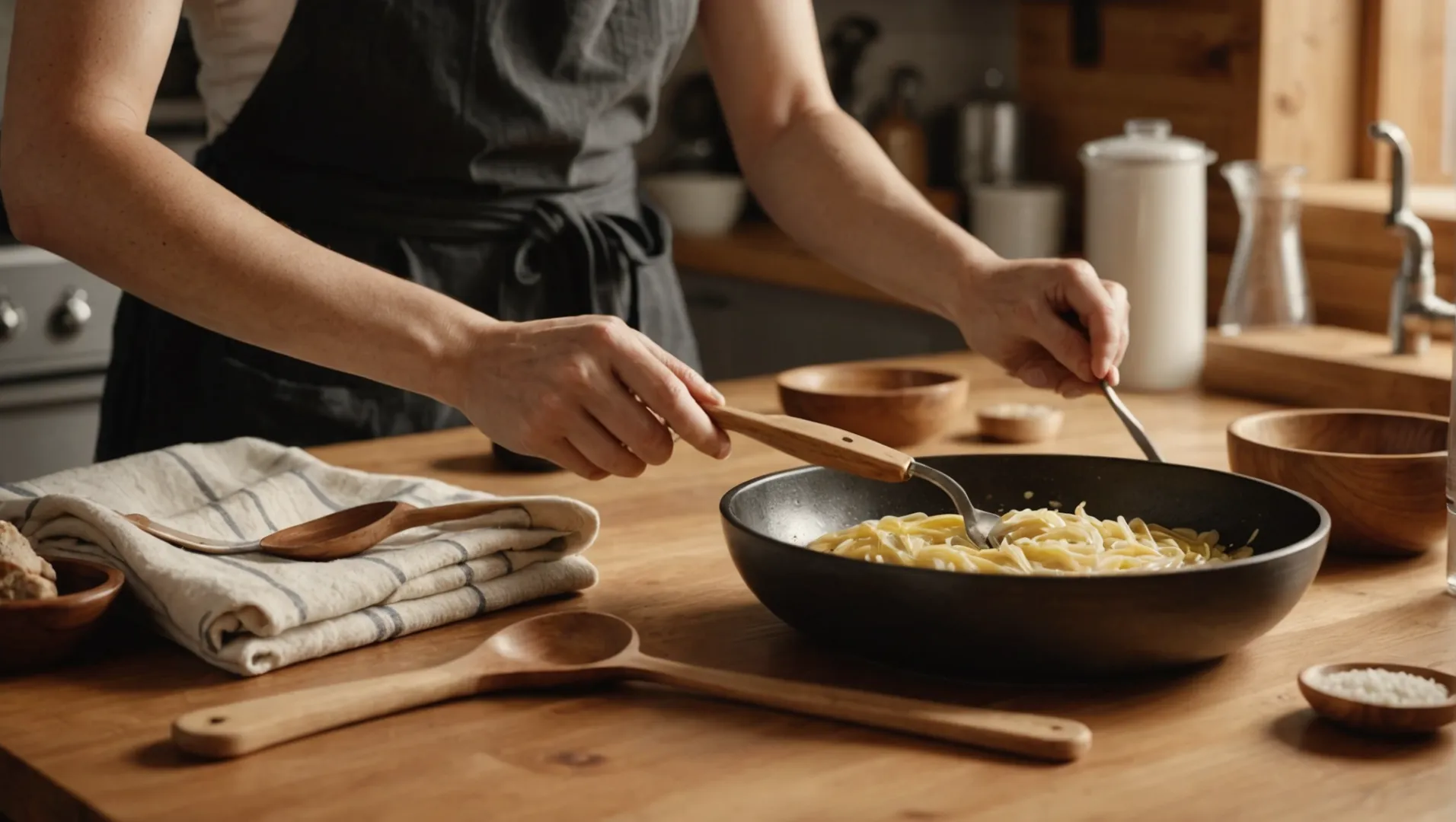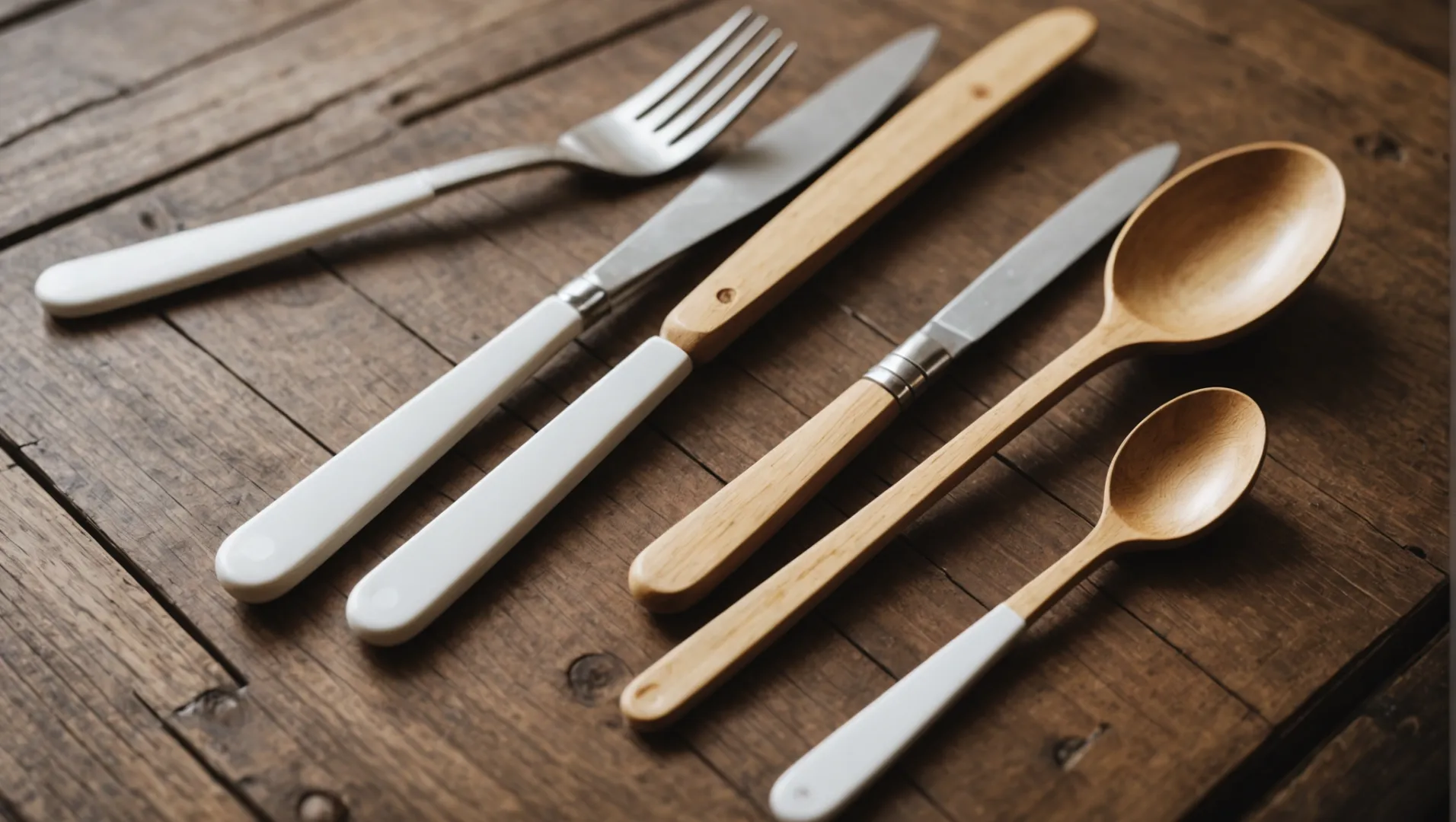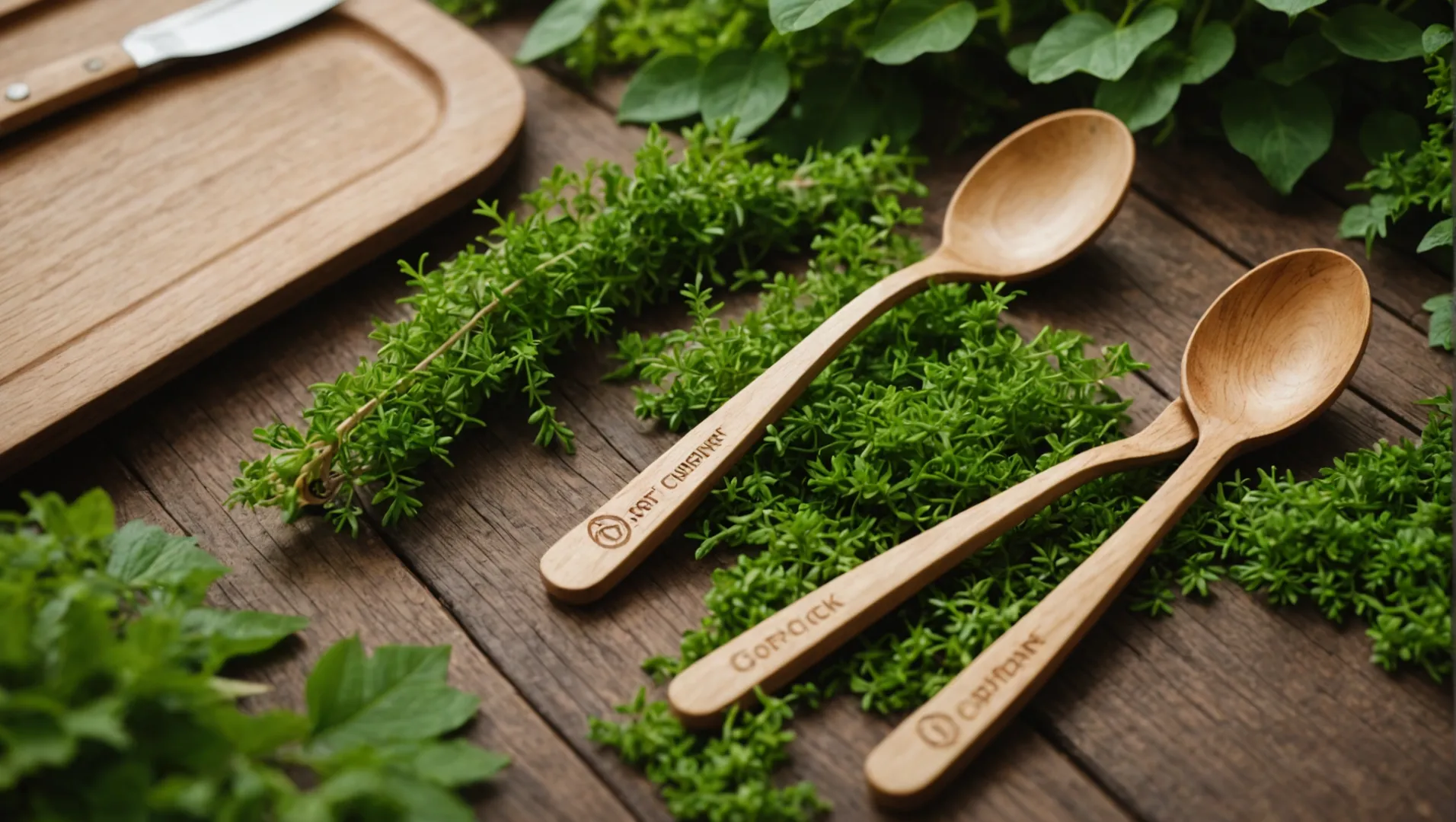
Have you ever wondered if your choice of cutlery can impact the environment? Disposable wooden cutlery is often touted as an eco-friendly alternative to plastic, but is it truly sustainable?
Life Cycle Analysis (LCA) reveals that disposable wooden cutlery offers significant environmental benefits over plastic due to its biodegradability and renewable sourcing. However, factors like maintenance and sourcing practices greatly influence its overall sustainability.
Continue reading to explore how responsible sourcing, proper maintenance, and manufacturing processes impact the environmental footprint of wooden cutlery. Learn about the advantages and potential drawbacks of using these utensils compared to plastic alternatives.
Wooden cutlery is more sustainable than plastic.True
Wooden cutlery is biodegradable and made from renewable resources, unlike plastic.
How Does the Production Process of Wooden Cutlery Impact Its Sustainability?
The production process of wooden cutlery can significantly affect its sustainability and environmental footprint.
Sustainable wooden cutlery production relies on responsibly sourced materials, eco-friendly coatings, and minimal waste practices. These factors contribute to a lower carbon footprint and enhanced biodegradability compared to plastic alternatives.

Sourcing of Materials
A sustainable production process for wooden cutlery begins with the responsible harvesting of wood1. This involves sourcing wood from forests certified by organizations like the Forest Stewardship Council (FSC), ensuring that the materials are replenished and biodiversity is maintained. This approach not only conserves natural resources but also supports local communities dependent on these forests for their livelihoods.
Eco-Friendly Coatings
During manufacturing, applying natural coatings such as beeswax or plant oils is crucial. These coatings enhance the utensil's durability and resistance to moisture, reducing the likelihood of bacterial growth. Unlike chemical-based finishes, natural coatings are non-toxic and decompose easily, aligning with the product's overall eco-friendly ethos.
| Coating Type | Benefits | Sustainability Impact |
|---|---|---|
| Beeswax | Enhances aesthetics and moisture resistance | Biodegradable and renewable |
| Plant Oils | Provides a smooth finish, easy to reapply | Non-toxic, promotes sustainability |
Manufacturing Practices
Efficient manufacturing techniques that minimize waste and energy consumption are pivotal in improving sustainability. Techniques such as precision cutting and using renewable energy sources can significantly reduce the carbon footprint of wooden cutlery production. Additionally, any wood scraps can be repurposed or composted, further minimizing environmental impact.
Waste Management
Another crucial aspect is effective waste management. Ensuring that manufacturing by-products are either recycled or composted can drastically reduce the ecological footprint of the production process. Companies that implement zero-waste policies often find themselves at an advantage in eco-conscious markets.
By focusing on these key areas, manufacturers can produce wooden cutlery that not only serves its functional purpose but also stands as a testament to sustainable practices.
Wooden cutlery is more biodegradable than plastic.True
Wood decomposes naturally, unlike plastic, which persists for centuries.
Chemical coatings enhance wooden cutlery's sustainability.False
Natural coatings are sustainable; chemical ones are not biodegradable.
What Are the Key Maintenance Tips for Ensuring the Longevity of Wooden Utensils?
Wooden utensils bring rustic charm to kitchens but require special care to stay durable and hygienic.
To ensure the longevity of wooden utensils, regularly apply food-grade oil, avoid soaking them in water, wash with mild soap, and dry thoroughly. Store in a dry place away from direct sunlight to prevent cracking and warping.

Regular Oiling for Protection
Wooden utensils, unlike their metal or plastic counterparts, need regular oiling2 to maintain their luster and structural integrity. Applying food-grade oils such as mineral oil or beeswax creates a barrier that repels water and reduces bacterial growth. This practice not only extends the life of your utensils but also keeps them looking fresh and vibrant.
Tip: Apply oil monthly or whenever the wood appears dry.
Proper Cleaning Techniques
Cleaning wooden utensils requires a gentle touch. Use mild dish soap and warm water, avoiding prolonged soaking. This prevents the wood from absorbing water, which can cause swelling and eventually cracking. Instead, wipe them down quickly and let them air dry or use a clean towel.
Important: Never put wooden utensils in the dishwasher as the high temperatures can damage them.
Strategic Storage Solutions
Where you store your wooden utensils can greatly affect their lifespan. Keep them in a cool, dry place away from direct sunlight. Excessive heat and light can dry out the wood, leading to brittleness and cracks over time.
Storage Tip: Consider hanging your utensils or placing them in a breathable container rather than stacking them tightly.
Avoiding Extreme Conditions
Exposure to extreme conditions like high heat or excessive moisture can be detrimental to wooden utensils. Avoid using them to stir very hot liquids for extended periods, as this can weaken the wood's fibers.
Additionally, avoid leaving them in damp environments, such as near sinks or in humid areas.
Consideration: When planning a camping trip or outdoor event, ensure your wooden cutlery is stored properly to prevent weather-related damage.
Repairing Minor Damages
Despite the best care, wooden utensils can suffer minor damages like scratches or stains. Sanding these areas lightly with fine sandpaper can often restore their smooth surface. After sanding, remember to reapply oil to seal the wood again.
Quick Fix: For stubborn stains, a mixture of baking soda and water can act as a natural abrasive cleaner.
Taking these steps ensures that your wooden utensils remain both functional and aesthetically pleasing for years to come. Embrace these simple maintenance practices to enjoy the natural beauty and sustainability that wooden cutlery offers.
Wooden utensils should be soaked in water for cleaning.False
Soaking can cause wood to swell and crack; wipe them instead.
Regular oiling prevents wooden utensils from cracking.True
Applying food-grade oil monthly keeps wood hydrated and intact.
How Do Wooden and Plastic Cutlery Compare in Terms of Environmental Impact?
As sustainability becomes a priority, the environmental impact of cutlery is under scrutiny. Which is greener, wood or plastic?
Wooden cutlery is more environmentally friendly than plastic due to its biodegradable nature and renewable sourcing. It decomposes faster and its production typically involves fewer harmful chemicals, making it a more sustainable choice for eco-conscious consumers.

The Journey from Raw Material to Product
When comparing wooden and plastic cutlery, the entire lifecycle, from raw material extraction to disposal, must be considered. Wooden cutlery3 is derived from renewable resources such as bamboo or birch. These materials are often harvested from responsibly managed forests, reducing the impact on ecosystems. In contrast, plastic cutlery is produced from petroleum-based polymers, which are non-renewable and have a significant carbon footprint.
Production and Manufacturing Process
The manufacturing of wooden utensils involves less energy consumption compared to plastic. The process typically includes cutting, shaping, and finishing with natural oils or waxes. However, plastic production involves chemical processing and high-temperature molding, which contribute to higher emissions and energy use.
| Aspect | Wooden Cutlery | Plastic Cutlery |
|---|---|---|
| Source Material | Renewable (wood/bamboo) | Non-renewable (petroleum) |
| Energy Consumption | Lower during production | Higher due to chemical processing |
| Biodegradability | Biodegradable, compostable | Non-biodegradable |
| End-of-life Options | Composting, recycling (limited) | Recycling (limited), landfill |
Biodegradability and End-of-Life Impact
One of the significant advantages of wooden cutlery is its biodegradability. Once disposed of, it decomposes naturally within months to years, contributing less to landfill waste compared to plastic cutlery, which can take centuries to break down.
The Role of Eco-Certification
Eco-certifications play a crucial role in ensuring that wooden cutlery is sourced and manufactured sustainably. Certifications such as FSC (Forest Stewardship Council) guarantee that the wood used is harvested responsibly. This provides consumers with confidence that their choice contributes positively to environmental sustainability.
User Considerations
From a consumer perspective, wooden cutlery requires more care in terms of maintenance. Regular oiling and avoiding prolonged exposure to water are recommended practices to extend their usability. In contrast, plastic utensils are often seen as more convenient due to their resistance to moisture and ease of cleaning, but at a significant environmental cost.
In conclusion, while both options have their own set of pros and cons, wooden cutlery4 emerges as the more sustainable choice when considering environmental impact over its entire lifecycle.
Wooden cutlery is more biodegradable than plastic.True
Wood decomposes naturally within months to years, unlike plastic.
Plastic cutlery has a lower carbon footprint than wooden cutlery.False
Plastic is made from petroleum, leading to a higher carbon footprint.
Why Is Eco-Certification Important for Wooden Cutlery Products?
Eco-certifications ensure that wooden cutlery is sustainably sourced and safe for consumer use. But why does it matter?
Eco-certification is crucial for wooden cutlery as it verifies sustainable sourcing, safe production practices, and compliance with environmental standards, reassuring consumers and enhancing product credibility.

Understanding Eco-Certifications for Wooden Cutlery
Eco-certifications play a pivotal role in validating the sustainability claims of wooden cutlery. These certifications, such as the Forest Stewardship Council (FSC), ensure that the wood used in utensils is sourced from responsibly managed forests. This is critical in mitigating deforestation and preserving biodiversity. Moreover, certifications like the FDA and LFGB confirm that the products are safe for food contact, ensuring consumer health.
In global markets, eco-certification acts as a seal of trust, appealing to environmentally conscious consumers who demand transparency in product sourcing and manufacturing. With increasing governmental regulations on single-use plastics, such certifications help companies demonstrate their commitment to sustainability.
Key Benefits of Eco-Certification
Consumer Trust and Transparency
Eco-certifications provide assurance to consumers that the wooden cutlery they purchase adheres to high environmental standards. This transparency not only strengthens brand reputation but also fosters consumer loyalty.
Market Competitiveness
In competitive markets, especially where environmental regulations are stringent, having an eco-certified product can offer a significant advantage. It differentiates products from uncertified alternatives and can be a deciding factor for environmentally conscious buyers.
| Certification Type | Purpose |
|---|---|
| FSC | Ensures responsible forest management |
| FDA/LFGB | Verifies food safety standards |
Challenges and Considerations
While eco-certifications provide numerous benefits, they also come with challenges. Obtaining certification can be costly and time-consuming, particularly for small manufacturers. Additionally, maintaining compliance requires ongoing effort and resources.
The demand for eco-certified products often pushes manufacturers to rethink their entire supply chain—from sourcing raw materials to production processes. This can lead to innovations in sustainable practices but may also require significant investments.
Looking Forward: The Future of Eco-Certified Wooden Cutlery
As consumers become more aware of environmental issues, the demand for eco-certified products is expected to rise. This trend will likely push more companies towards adopting eco-certification as a standard practice. Moreover, innovations in life cycle analysis (LCA5) will continue to enhance the transparency and credibility of wooden cutlery's environmental impact.
Overall, eco-certification serves as a vital tool in promoting sustainable practices and encouraging responsible consumer behavior.
FSC certification ensures sustainable wood sourcing.True
FSC certification verifies that wood is sourced from responsibly managed forests.
Eco-certification increases production costs for wooden cutlery.True
Obtaining and maintaining eco-certifications can be costly for manufacturers.
Conclusion
Wooden cutlery proves to be a more sustainable choice when responsibly sourced and maintained. Consumers should prioritize eco-certified products and adopt proper care practices to maximize their environmental benefits.
-
Learn how responsible sourcing supports sustainability and community livelihoods.: Wood cutlery is 100% natural. No chemicals are used in the manufacturing process, causing no chemical impact on the environment. ↩
-
Discover which oils are ideal for protecting wooden kitchen tools.: Mineral oil has long been the go-to for oiling wood, but some people don't want to buy petroleum products, as they could be possible carcinogens. ↩
-
Learn how wooden cutlery reduces ecological footprint compared to plastic.: One of the main sustainability benefits of disposable wooden utensils is that they can be composted. Composting ensures that a majority of the carbon and ... ↩
-
Discover how quickly wooden utensils decompose in natural environments.: Like food scraps, coffee grounds, leaves, and branches, birch and bamboo utensils are fully compostable. This means they can be combined with other organic ... ↩
-
Discover how LCA assesses environmental impacts comprehensively.: The ideal finish line for a disposable wooden utensil is being added to compost. Here, it will decompose in about 90 days, enriching the soil that it came from ... ↩

